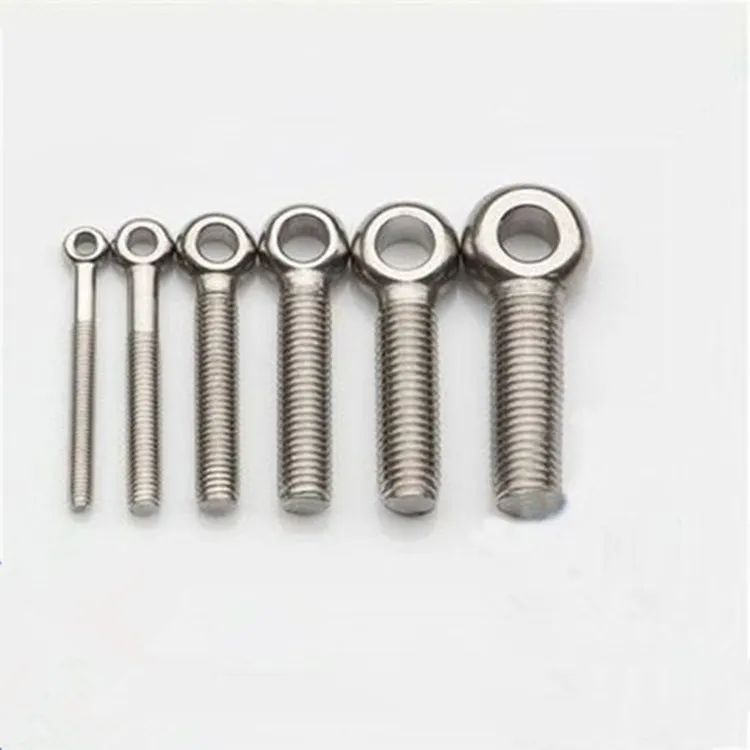

countersunk tapping screw
Oct . 30, 2024 11:51 Back to list
countersunk tapping screw
Understanding Countersunk Tapping Screws Features and Applications
Countersunk tapping screws are integral fasteners widely used in various industries, from construction to electronics. These screws are uniquely designed to provide a flush finish when installed, making them ideal for applications where aesthetics and safety are paramount. In this article, we will explore the features, benefits, and applications of countersunk tapping screws.
What are Countersunk Tapping Screws?
Countersunk tapping screws are characterized by their conical head and self-tapping ability. The conical head allows the screw to sit flush with the surface of the material into which it is driven. This design not only contributes to an aesthetically pleasing finish but also reduces the risk of snagging or catching on clothing or other materials. The term tapping refers to the screw's ability to create its own thread as it is driven into the material, eliminating the need for a pre-drilled hole in many applications.
Features of Countersunk Tapping Screws
1. Head Design The countersunk head allows for a smooth surface upon installation, making them suitable for applications where the screw head should not protrude. Various head types are available, including slotted, Phillips, and hex, catering to different tools and preferences.
2. Material and Coating Countersunk tapping screws are made from various materials, including stainless steel, carbon steel, and brass, providing options for different environmental conditions. Many screws are also coated with finishes such as zinc or black oxide to enhance their corrosion resistance.
3. Self-Tapping Capability The threads on tapping screws are designed to cut into the material as they are driven in, making them efficient for fast installation and reducing the risk of splitting the material.
4. Variety of Lengths and Diameters Countersunk tapping screws come in various lengths and diameters, allowing engineers and builders to select the appropriate screw for their specific application.
Benefits of Countersunk Tapping Screws
countersunk tapping screw

1. Enhanced Aesthetics The flush design of countersunk screws provides a clean, polished look, making them ideal for visible applications in furniture, cabinetry, and architectural features.
2. Improved Safety A countersunk screw reduces the risk of injury from protruding fasteners, especially in high-traffic areas or on equipment that users frequently interact with.
3. Versatility These screws can be used on a wide range of materials, including wood, metal, and plastic, making them versatile for various projects.
4. Time Efficiency With their self-tapping feature, these screws save time during installation since there is often no need for pilot holes, allowing for quicker assembly.
Applications
Countersunk tapping screws are used in numerous applications, including
- Furniture Assembly Used to secure joints and create a seamless finish in wooden furniture. - Electrical Enclosures Often employed in electrical and electronic devices to secure components without compromising safety or aesthetics. - Construction Extensively used in roofing, siding, and drywall applications where a flush finish is desired.
Conclusion
Countersunk tapping screws are an essential component in many manufacturing and assembly processes. Their unique design and functionality provide practical benefits in terms of aesthetics, safety, and efficiency. Whether in the home, office, or industry, these screws fulfill a vital role in ensuring durability and a clean finish in a variety of applications. Understanding their features and capabilities can help professionals select the right fasteners for their specific needs.
Latest news
-
High-Strength Hot-Dip Galvanized Bolts-Hebei Longze|Corrosion Resistance&High Strength
NewsJul.30,2025
-
Hot Dip Galvanized Bolts-Hebei Longze|Corrosion Resistance&High Strength
NewsJul.30,2025
-
Hot Dip Galvanized Bolts - Hebei Longze | Corrosion Resistance, High Strength
NewsJul.30,2025
-
High-Strength Hot Dip Galvanized Bolts-Hebei Longze|Corrosion Resistance, Grade 8.8
NewsJul.30,2025
-
Hot Dip Galvanized Bolts-Hebei Longze|Corrosion Resistance,High Strength
NewsJul.29,2025
-
High-Strength Hot Dip Galvanized Bolts - Hebei Longze Metal Products Manufacturing Co., Ltd.|corrosion resistance&high strength
NewsJul.29,2025

